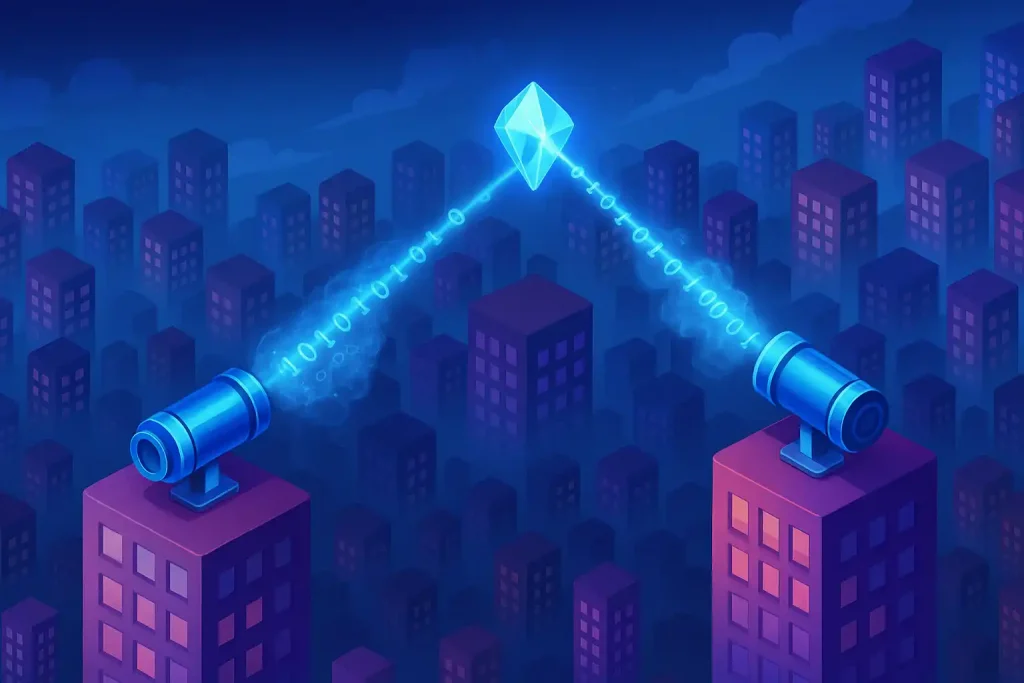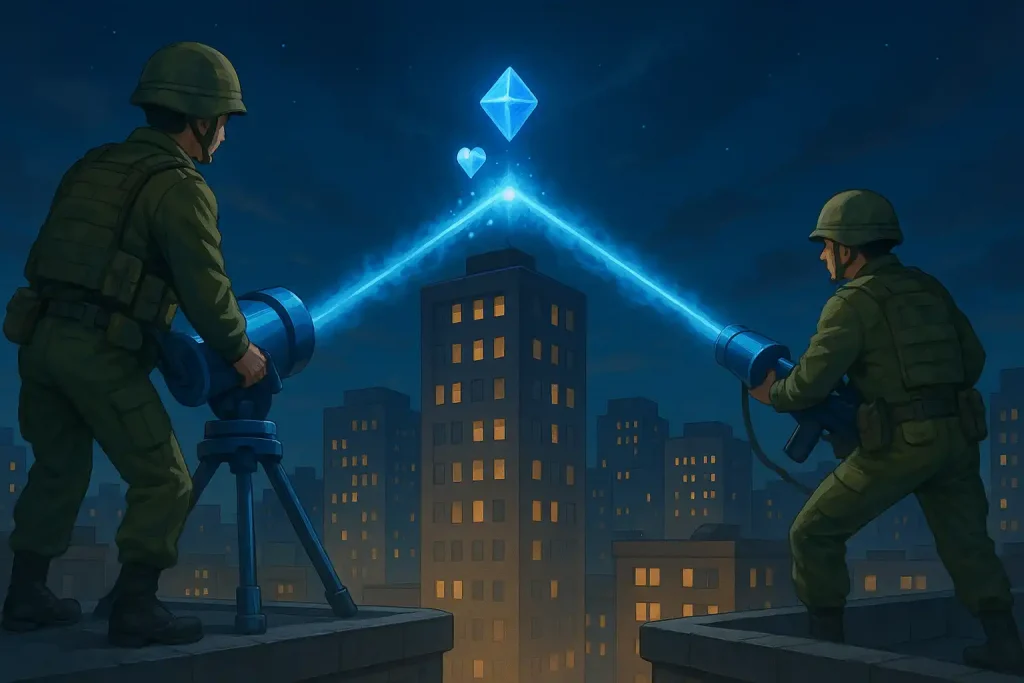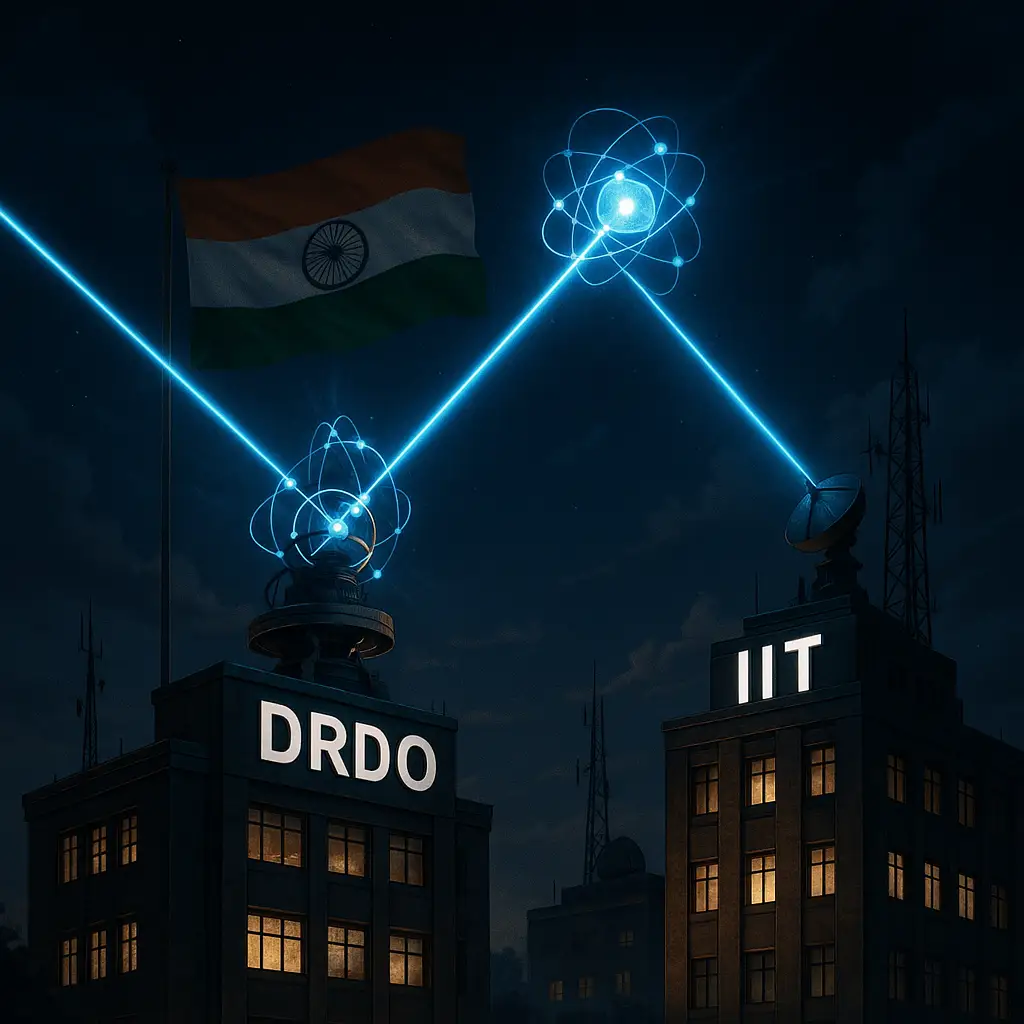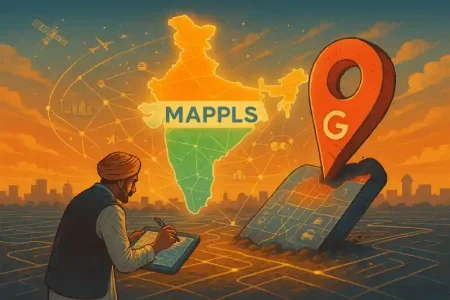With this latest breakthrough, India’s quantum communications can now work in real-world combat zones, deserts, hillsides, and even between moving vehicles or drones.
Earlier last month, we posted about how Schroedinger’s cat made quantum computers 160 times more reliable. We also posted about how it’s now 20 times easier for quantum tech to crack Bitcoin encryption than we previously thought. Now it’s India’s turn to make quantum headlines.
On June 16, 2025, a team from DRDO and IIT Delhi pulled off what only a select few nations have pulled off before: they managed to send quantum encryption keys through open air using entangled photons. That means no underground cables, no heavy fiber optics, just rooftop-to-rooftop communication over one kilometre of space. The system delivered a secure key rate of over 230 bits per second with a quantum bit error rate of under seven percent, making it viable for real-world use.
What makes this more than a scientific headline is the fact that everything involved was developed in India, with no imported hardware. It’s a working prototype of what future military and national communications might actually look like.
Free-Space QKD

To understand the significance of this breakthrough, let’s break down two key terms. QKD refers to Quantum Key Distribution. This is “basically” a way of sending encryption keys using the laws of quantum mechanics (as opposed to traditional mathematics-based protocols), where any attempted interception will be exposed immediately.
What makes it revolutionary is that it doesn’t just prevent hacking, it makes hacking impossible. That’s because if anyone tries to intercept the key, the quantum state collapses, alerting both parties to the breach. So instead of hoping your encryption holds up, you know, in real time, whether it’s been compromised. QBER, on the other hand, refers to Quantum Bit Error Rate, which is how you measure how clean or messy that quantum channel is.
A low QBER means the signal arrived intact and uncorrupted. Too high, and the link’s basically useless. The DRDO-IIT Delhi team achieved a QBER of under 7%, which is pretty remarkable for an open-air link and well within globally accepted thresholds for secure key generation.
Traditional quantum key distribution typically runs through kilometers of underground fiber-optic cable, expensive to install, vulnerable to damage, and restricted to physical routes. What DRDO and IIT Delhi have pulled off changes that equation completely. Their setup proves that entangled photons can carry encryption keys through the open air, from one building to another, with no cable between.
This means quantum communication can now work in real-world combat zones, deserts, hillsides, and even between moving vehicles or drones. It’s the kind of flexibility standard that traditional QKD can’t offer. And because it’s based on entanglement, any attempt to intercept the signal disrupts it, revealing the breach instantly. For defence applications where cable is impractical and wireless signals are risky, free-space QKD is no longer sci-fi, it’s now a working battlefield solution.
Quantum Key Distribution and Defence

What makes this especially significant is how it builds on India’s prior quantum milestones. In 2024, India completed a 100-kilometre QKD test using fiber, and in 2022, DRDO demonstrated a functional quantum-secure telecom link between Prayagraj and Vindhyachal. But fiber can only take you so far. Free-space changes the game. It’s infrastructure-light, rapidly deployable, and fits into existing defence doctrine.
DRDO has already signaled that this system could soon be mounted on satellites, aircraft, and ground vehicles, giving India quantum-secure coverage across domains. The research was led by Prof. Bhaskar Kanseri at IIT Delhi’s DIA-CoE and funded by DRDO’s Young Scientist Laboratory.
With over 15 Defence Innovation Accelerator–Centers of Excellence now involved in quantum R&D, this project is part of a bigger strategy: to create a home-grown, scalable quantum communication architecture that can plug into both civil and military systems. And judging by this test, that strategy is no longer just on paper.
The strategic value here doesn’t stop at defence. Imagine a nationwide quantum network that secures everything from stock exchanges to state secrets, with no central point of failure, and no risk of eavesdropping. That’s what India is aiming for, and this rooftop test between DRDO and IIT Delhi is the first real step.
Even more remarkable: everything used was indigenously developed, the entangled photon sources, the detectors, the software. No imported black boxes. That lines up directly with India’s Aatmanirbhar Bharat goals and proves that homegrown quantum hardware can compete globally. With ISRO planning satellite-based QKD demonstrations and multiple quantum tech labs popping up under the National Quantum Mission, this isn’t a one-off event. It’s the beginning of a full-blown, sovereign, quantum-secure communication grid. And it doesn’t require a single inch of cable.
Securing our Quantum Future
Like we mentioned in a previous post, today’s encryption methods, no matter how advanced, are vulnerable to quantum decryption tomorrow. A powerful enough quantum computer could unravel existing security protocols, exposing everything from bank transfers to nuclear command chains. But entanglement-based QKD bypasses that risk entirely. It creates encryption keys using the laws of physics, not math problems a quantum computer might someday solve.
India’s June 2025 QKD breakthrough didn’t just prove a theory, it established a working prototype of what military, government, and civilian communication could soon look like. From strategic defence to financial data, from high-level command centers to secure mobile platforms, the implications are enormous. It’s fast. It’s scalable. And most of all, it’s ours.
As global powers scramble to quantum-proof their networks, India has quietly leapfrogged into the lead with a field-ready solution that works now, not ten years from now.
In case you missed:
- Quantum Computers: It’s now 20X easier to crack Bitcoin encryption than we thought!
- Humans Just Achieved Teleportation? Clickbait vs. Facts
- Schrödinger’s Cat Just Made Quantum Computers 160x More Reliable!
- India, iPhones, China & Trump: The Foxconn Story!
- Slaughterbots: Robot Warriors in the Indian Armed Forces!
- 4 New Chip Fabs and a Rallying Cry from The Red Fort!
- Tesla’s India Launch: It’s not about the Model Y, it’s about the AI!
- India’s Mappls Revolution: The Swadeshi Push to Dethrone Google Maps
- India Brings AI to Its Aatmanirbhar Weather Forecasting
- India’s first Aatmanirbhar Chip Fab: TATA leads the way!










